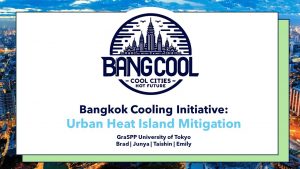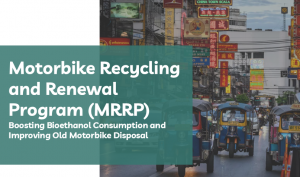Cementing the gap in Laos’s sustainable concrete production: Project LIME
 The rise of construction demand in least-developed countries such as Laos requires careful balancing of physical requirements with minimised carbon emissions. A student team at GraSPP has addressed the challenges in Laos’s cement industry through their proposal “Project LIME: Laos Initiative for Managing Concrete Emissions”, which introduces co-processing and Environmental Product Declarations to reduce emissions, improve waste processing efficiency, and reduce landfill waste, while establishing a scalable framework for regional implementation.
The rise of construction demand in least-developed countries such as Laos requires careful balancing of physical requirements with minimised carbon emissions. A student team at GraSPP has addressed the challenges in Laos’s cement industry through their proposal “Project LIME: Laos Initiative for Managing Concrete Emissions”, which introduces co-processing and Environmental Product Declarations to reduce emissions, improve waste processing efficiency, and reduce landfill waste, while establishing a scalable framework for regional implementation.
Concrete is inescapable in our rapidly urbanizing world, second only to water in global usage. Other materials have not matched its scalability, durability, and structural performance required for widespread use in modern infrastructure and development. On the other hand, its environmental impact is severe, as its principal component of cement contributes around 8% of global greenhouse gas emissions. To meet targets set by the Paris Agreement, it is critical for Laos’s concrete industry to cut emissions by at least 16% by 2030.
Laos sits in the crossfire of emission reduction initiatives as a developing nation with growing construction needs. Aspiring to be the “battery of Southeast Asia” by harnessing its hydroelectricity resources, the eight planned megadams along the Mekong River heavily exacerbate the demand for concrete, already strained by rapid urbanisation and natural disaster rebuilding efforts. This has resulted in the country’s cement production growing from 1.5 million tons in 2013 to 3.4 million tons in 2017. In turn, cement-based carbon emissions catapulted from an estimated 820,000 tons in 2013 to 5.5 million tons in 2023, accounting for 22% of total emissions.
In addition, Laos’s absence of formalized systems to utilize waste in construction practices prevents efficient resource recovery, with recyclable materials often mixed with other waste, leading to poor quality and low recovery rates.
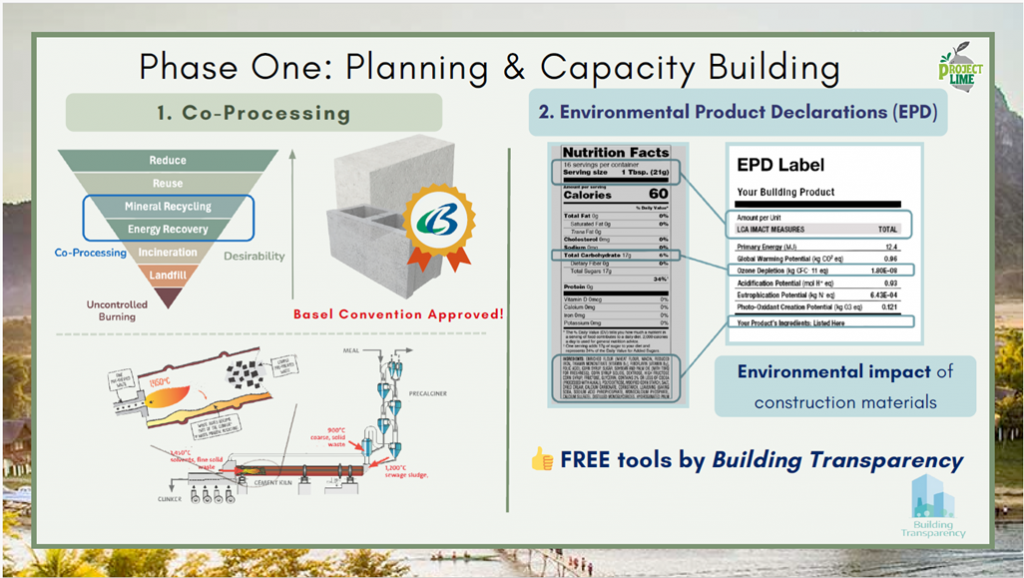
The GraSPP team took to the problem by identifying five central solution objectives: incorporate concrete into the national decarbonization strategy, ensure cost-effectiveness and scalability in its operations, formalize waste management to optimize resource use, and provide policymakers with tools to realize sustainable construction practices.
Their proposal contains two complementary strategies to achieve this. The first is co-processing as a greener solution for cement production. This allows the use of waste materials as alternative fuels and raw materials for future cement manufacturing. In particular, it targets the heavy process emissions from clinker (binder) production, reducing the amount of used limestone and fuel. The second strategy implements Environmental Product Declarations (EPDs), which are internationally standardized, verified labels based on life cycle assessments from raw material extraction to end-of-life. This will provide transparent, comparable data that supports sustainable decision-making.
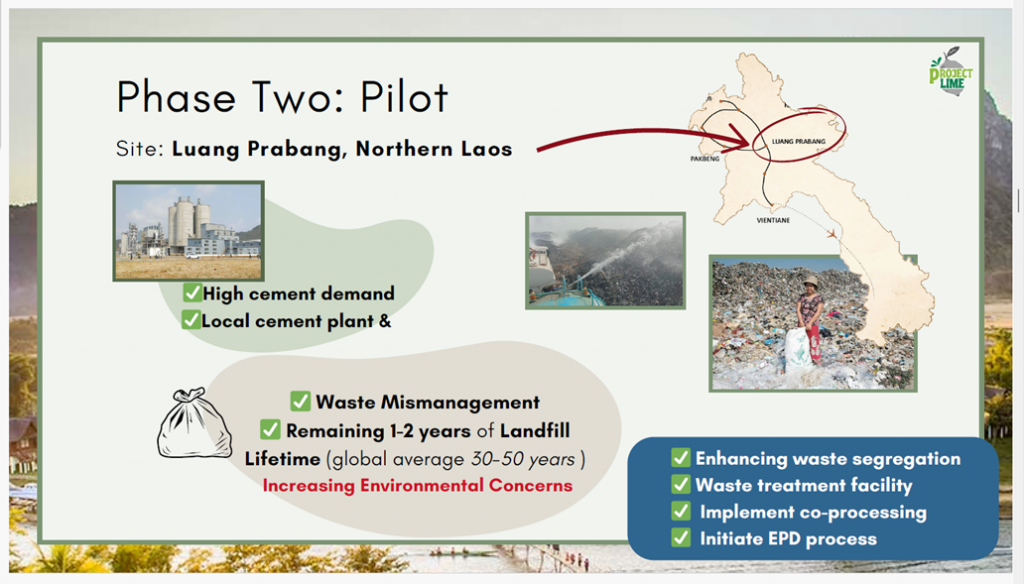
To pilot this solution, Project LIME proposes the site of Luang Prabang, a city in northern central Laos, which has been a focus of recent development, including a hydropower plant scheduled for 2029, exemplifying many of the core issues discussed above. The introduction of co-processing and EPDs will simultaneously ease landfill burden, improve air quality, establish greener industry practices, and create socioeconomic opportunities for local stakeholders. The pilot’s main goals are to: (1) set up more thorough waste segregation, (2) establish a waste treatment facility, (3) incorporate co-processing systems into the local cement plant, and (4) introduce EPDs for locally produced cement. A robust monitoring and evaluation framework will be implemented to measure the success of the project, including: local concerns, community perceptions monitoring, and air emission monitoring.
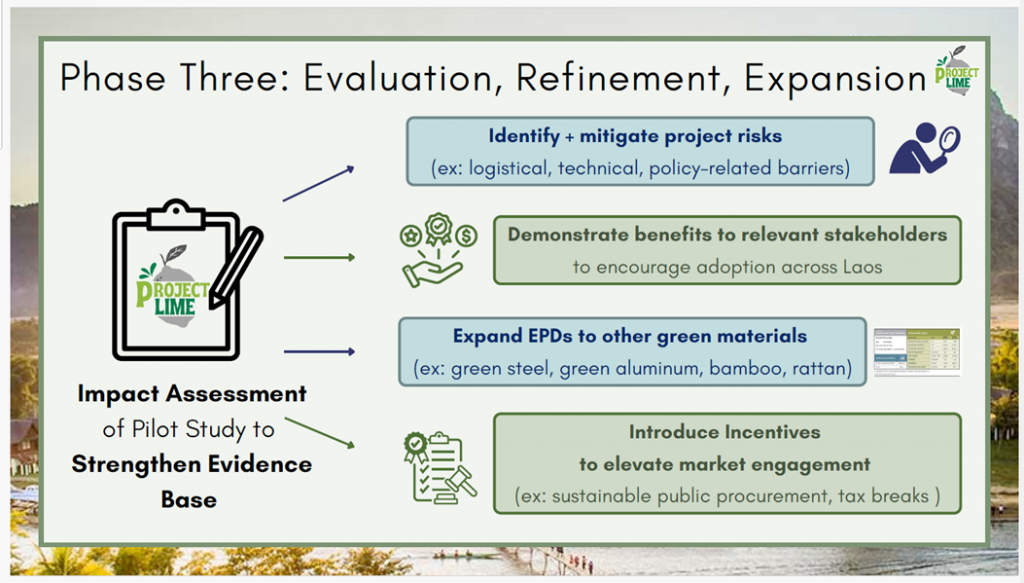
Implementation of this project will require the cooperation of five key stakeholder groups: government, capital, corporate, knowledge, and community. Various Lao government departments will establish policies and inter-ministerial coordination to integrate co-processing into decarbonization and waste strategies at the national level. Meanwhile, municipal bodies will facilitate local implementation in coordination with the national government, capital stakeholders, corporate stakeholders, as well as the local community where the concrete plant resides.
Capital stakeholders, including multilateral development banks, will provide resources and frameworks for sustainable investment and technical knowledge. Corporate stakeholders, such as Laotian cement companies and contracted private waste management firms, will operationalize co-processing and manage the logistics of waste-to-energy systems.
Meanwhile, knowledge stakeholders, including organizations like the Global Cement and Concrete Association, the Asian Development Bank
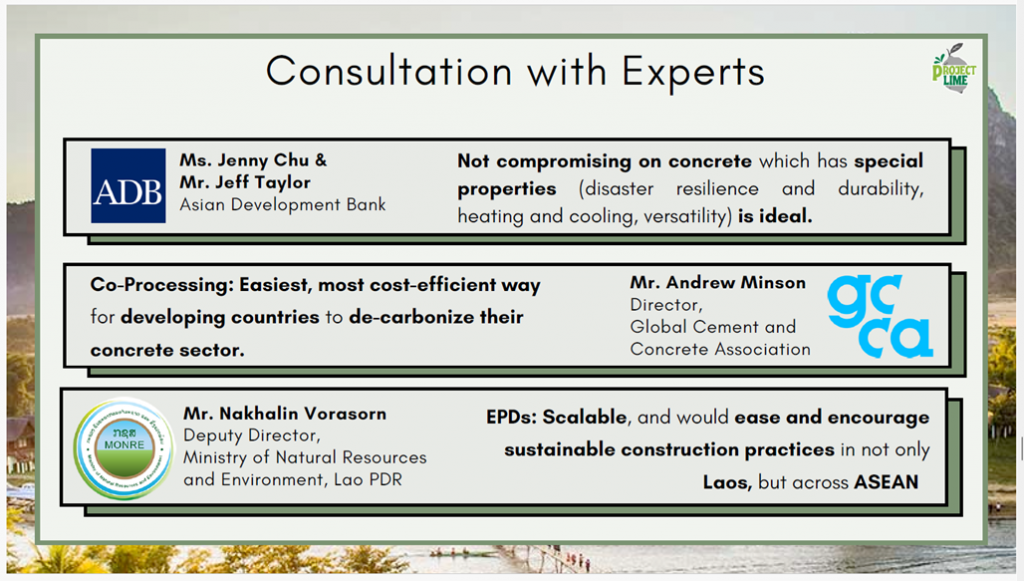
Institute, and the World Business Council for Sustainable Development, will ensure the oversight of EPDs and life cycle assessment, maintaining transparency and accuracy in environmental records. Finally, community stakeholders, including the informal sector and residents near cement facilities, will be introduced to roles in co-processing preparation, contributing to the local economy.
Laos’s task to integrate with the modern socioeconomic work is a tall one. Exacerbated by waste mismanagement and the lack of standardized monitoring tools within its policy framework, significant hurdles confront Laos’s aspirations to modernise its infrastructure and enter middle-income status by 2030. Project LIME’s proposal to institutionalize co-processing and Environmental Product Declarations (EPDs) will guide its concrete industry to sustainability as well as competitiveness in global markets. With a dual role of meeting the rising regional demands for sustainability standards and construction materials, Project LIME could mark the beginning of a high-rising debut in the ASEAN economy.
(Edited by Clement Ng)
This blog post was originally written as a proposal to the 2025 Global Public Policy Network Conference and Case Study: GraSPP Policy Challenge 2024.
The full version is available from the link below.
(Final Proposal) Project LIME: Laos Initiative for Managing Concrete Emissions





